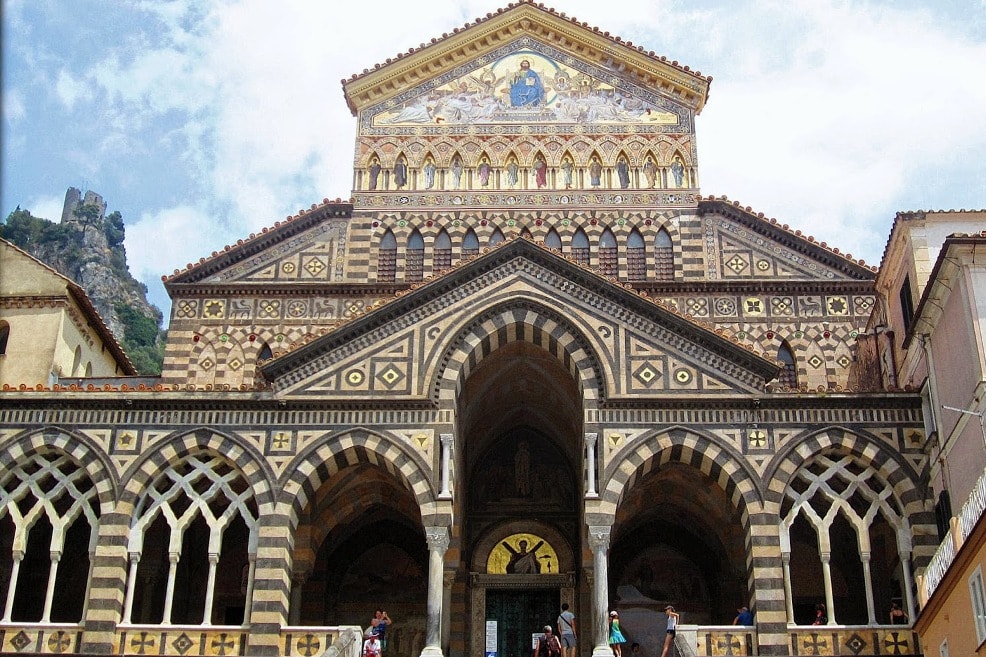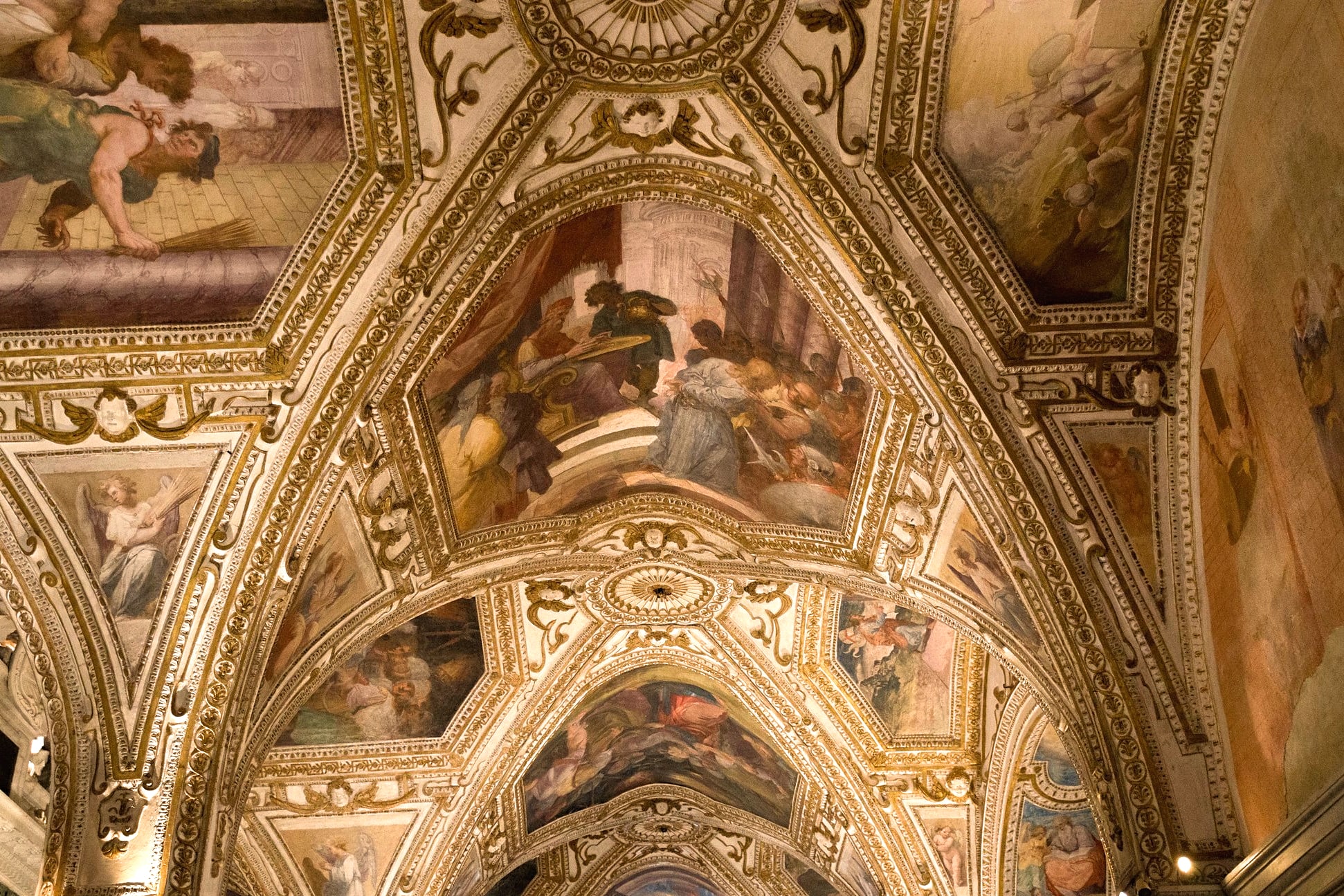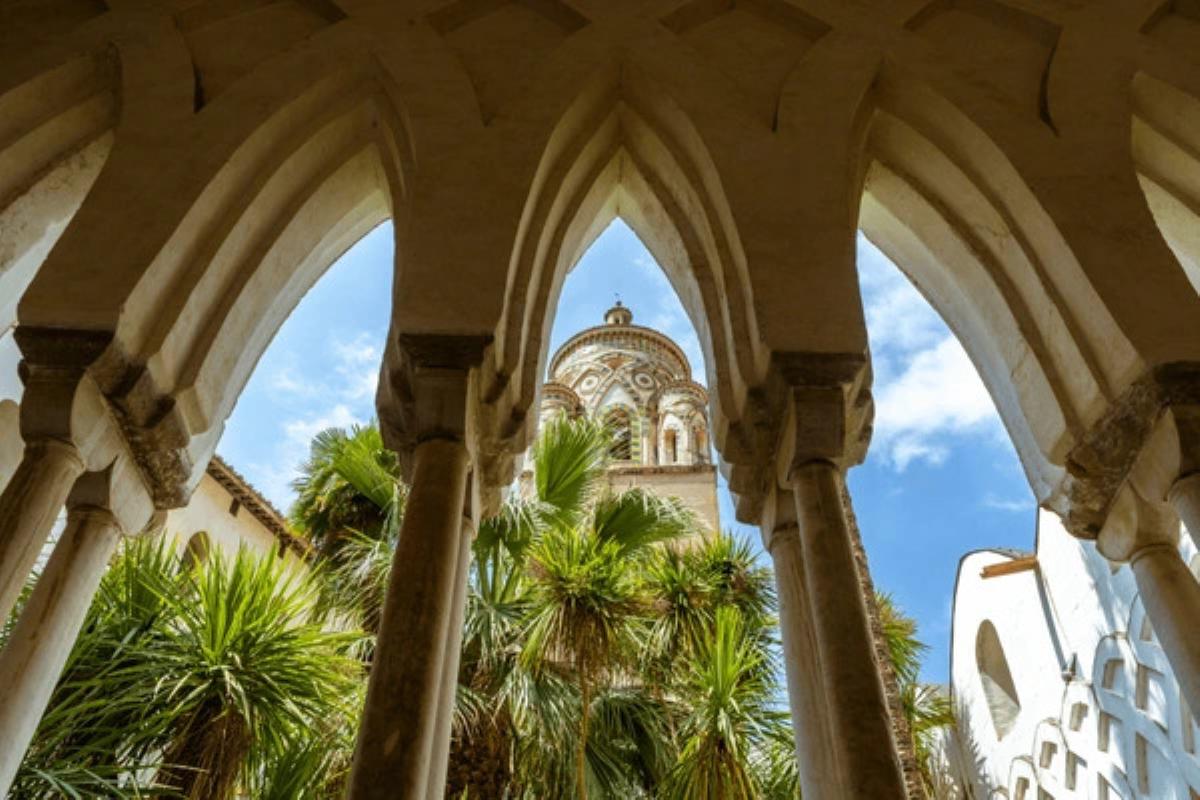Amalfi Cathedral
The Amalfi Cathedral is the main attraction in Amalfi, dedicated to the apostle Andrew, it is also known as St. Andrew's Cathedral. This unique, evocative and exciting sacred place attracts thousands of visitors every year.
The history of the Amalfi Cathedral
The Amalfi Cathedral, the main Catholic site of worship in the city of Amalfi, is a 9th-century construction with architectural features ranging from Romanesque to Baroque to Rococo. The prevailing architectural style is Romanesque and Arab-Norman; it has been renovated several times, adding several other styles to its structure, such as: Byzantine, Gothic and Baroque elements. The cathedral includes the adjoining Basilica of the Crucifix also dating back to the 9th century, the Crypt of St. Andrew and the famous Cloister of Paradise.
The Amalfi cathedral was built by Duke Manson I beginning in the year 987 next to the existing 9th-century cathedral, which in turn was built on the ruins of a temple when the Maritime Republic began to establish itself as a trading power. Initially the two churches were merged, forming a single complex in Romanesque style with six naves, while in 1266, the naves were reduced to five, following the decision to build the Cloister of Paradise. Later following the Counter-Reformation, the two churches were again divided, so as to form the Basilica of the Crucifix.
In the following years the Amalfi cathedral was renovated numerous times, until the most recent reconstruction, which dates back to December 24, 1861, where under the action of a strong wind, a section of the crowning of the cathedral's façade, in a poor state of preservation, fell, breaking through one or two vaults of the atrium below. After the endorsement of the stylistic restoration proposals by the Council of Fine Arts, the facade was completely renovated, erasing the existing layers on the facade (from the Renaissance, Baroque, etc.) and having the cathedral rebuilt in the style of architect Lorenzo Casalbore, who demolished the distinguished portico, capitals, cornices, the same plasterwork and the bases and pilasters from the 18th century to give life to the new structure as we know it today.

Amalfi Cathedral: the composition of the cathedral
The cathedral of Amalfi is an architectural complex that includes two basilicas, practically communicating, a crypt, the bell tower and the Cloister of Paradise.
The facade of the Amalfi Cathedral and the bell tower
Towering over the coastal town at the top of a scenic staircase, the present facade of Amalfi's cathedral is composed of a mosaic, rich in bright shapes and colors, and a depiction of Christ enthroned amid the Evangelists.
In addition, the Duomo of Amalfi has a splendid Romanesque bell tower, finished in 1276, covered with mosaic tiles and restored in 1929. Beyond the portico is the bronze front door to the cathedral, which came from Constantinople as a gift from an Amalfi patrician.
The crypt of the Amalfi Cathedral
Inside the Crypt are the relics of St. Andrew, the first disciple of Jesus and patron saint of Amalfi. After St. Andrew's martyrdom, according to tradition, his relics were moved from Patras to Constantinople. Local legends tell that the relics were sold by the Romans. There they remained until 1208 when, during the Fourth Crusade, the relics were brought to Amalfi, by Cardinal Pietro Capuano, a native of Amalfi.
The Crypt is now in its Baroque form dated in the 1600s with scenes from the Passion of Jesus set among rich and elegant stucco decorations. The central altar, in fine marble, is the work of Domenico Fontana. The large bronze statue is by Michelangelo Naccherino. Next to it are marble statues representing St. Lawrence and St. Stephen. The sacred relics are enclosed in a silver urn placed under the central altar, the work of Domenico Fontana.

The interior of the Amalfi cathedral
The interior of the Amalfi cathedral, with its coffered ceiling, is marked by a nave, characterized by the large wooden Crucifix from the 13th century; above, however, on the altar, is the painting of the Martyrdom of St. Andrew; two majestic columns of Egyptian granite support the triumphal arch; further on are two Tortile Columns and the two Pulpits. In the left aisle is the Mother-of-Pearl Cross, brought from the Holy Land by Bishop Marini, next to it the Baptistery in Egyptian red porphyry, and, going down the aisle, in the side chapels some canvases by Silvestro Mirra and his Pupils. In the right aisle we find the 16th-century Reliquary Bust of St. Andrew and, on the door, a large canvas depicting St. Andrew and St. Matthew.
The Cloister of Paradise
The Cloister of Paradise is part of the Amalfi Cathedral complex; in fact, from the latter's atrium there is access to one of the most famous and interesting buildings on the entire Amalfi Coast.
In the years between 1266 and 1268 Archbishop Filippo Augustariccio had the Paradise Cloister built, a cemetery for distinguished and well-deserving citizens attached to the Basilica of the Assumption, connected to the archbishop's palace and formed by a four-sided portico with cross vaults, pointed arches, coupled columns and interlaced arches of Moorish influence, the very name from which it derives.
In that graveyard there were six frescoed chapels dating from the late 13th and early 14th centuries. They belonged to noble Amalfi families and housed sarcophagi with the bodies of their illustrious representatives. Of these sarcophagi, six of significant importance remain today:
the sarcophagus representing the "Rape of Proserpine," a well-known episode from Greek mythology;
the sarcophagus representing "Romulus and Remus suckled by the she-wolf."
The sarcophagus representing the "wedding of Peleus and Thetis."
the Roman sarcophagus with "ad esse" grooves, with the coat of arms of the Amalfi family of Favaro and with the Amalfi cross (it is now in the arsenal);
the sarcophagus of Archbishop Pietro Capuano, who died in 1359, which features carved images of Our Lady, Christ, the Twelve Apostles and Saints Bishops Blaise and Basil (now the cathedral's high altar);
The fourth-century AD Roman sarcophagus bearing the name of decurion Publius Octavius Rufus.
Located in the center of the lovely Arabic-style cloister is a gracious little garden with palm trees, which was most likely built only after the 1908 restoration, since in the early 17th century the Paradise cloister was literally abandoned.

How to get to the Amalfi Cathedral
The cathedral in Amalfi can be reached from Salerno, Positano or other towns on the Amalfi Coast by ferry. Once you arrive in Amalfi at the pier, the cathedral is only a few hundred meters away.
Opening hours of the Amalfi Cathedral
PERIOD | OPENING HOURS |
|---|---|
March to June | 09:00 - 18:45 |
July to September | 09:00 - 19:45 |
November to February | From 10:00 to 13:00 and from 14:30 to 16:30 |
NOTE: Admission to Amalfi Cathedral is free, while access to the Museum and the Cloister of Paradise is for a ticket costing €3.






